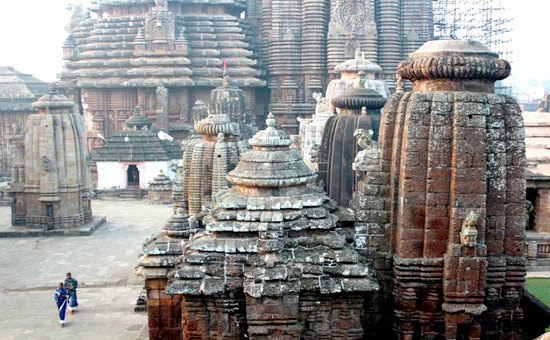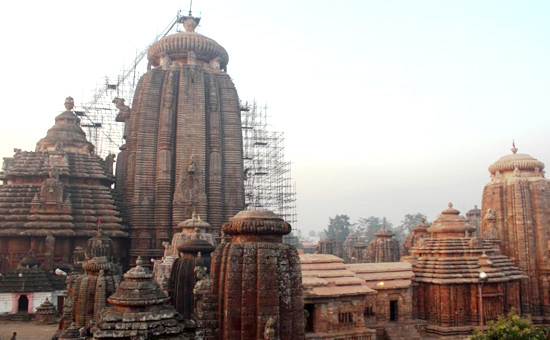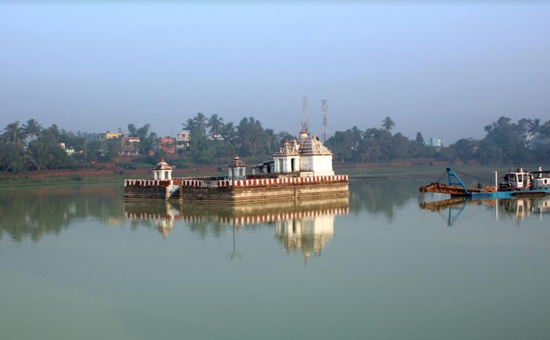- Article
tells you about the famous and revered Lingaraja Shiv Mandir.
The
Lingaraja temple is the largest and one of the oldest temple in Bhubaneswar,
which is a city of temples. The 13th century Ekamra Purana narrates that
Bhubaneswar was famous as Ekamra Kshetra where Lord Lingaraj was under a mango
tree.
Lingaraj
Temple depicts the rich legacy of Indian culture and traditions. The spiritual
ecstasy offered by the temple is worth feeling for once.
Lingaraja
means “the king of the ligam”, which means that the worshipable deity of this
temple is Lord Shiva. The shiva-linga present there is svayambhu, i.e
self-manifested. The Purushottama-khanda of the Skanda Purana and the
Antya-khanda of the Chaitanya Bhagavata describe that Lord Shiva attained
Bhubaneswar as a place of residence.
However,
according to Brahma Purana - “While the construction of the temples were on the
verge of completion, the Jagannath cult started taking its shape.” And this
fact has been testified by the evidence that Lord Shiva and Lord Vishnu are
revered here at this temple. Hence, lord Vishnu also holds the equal importance
in this temple and both are worshiped together in the form of Hari-Hara.
The
north-east corner of the temple hosts the Deity of Parvati Devi known as
Bhuvaneshwari Devi, the consort of Tribhuvaneshwar (shiva) - the master of the
three worlds.
In fact
the city of Bhubaneswar is named after the name Tribhuvaneshwara. As per
tradition, one should visit the Lingaraj temple first before
visiting the temple of Lord Jagannatha in Puri.
 View of Lingaraja temple.
View of Lingaraja temple.
According
to some Sanskrit texts, the temple was constructed by Lalat Indu Keshari who
ruled the region during 615 to 657 CE but according to Brahma Purana, the
Somavanshi King Yayati built the temple during the period 1025 to 1040 CE. Some
of the present historians believe that the temple was constructed by Ananta
Kesari and Udyota Kesari, sons of Yayati.
What may
be the story of the construction, the temple attracts devotees from from all
over India, earlier and now.
Lingaraj
Temple is partitioned into four sections, the Garbh Griha, the Yajna Shala, the
Bhoga Mandap and the Natya Shala individually.
In the
Garbh Griha, the lingam of Lord Shiva is viewed as ‘Swayambhu’ and it is
venerated as both Lord Shiva and Lord Vishnu. On the main entrance,
one can see a trident (Lord Shiva) and Chakra (Lord Vishnu) on the either side
of the door.
 Right side view of temple.
Right side view of temple.
All these
things indicate that the temple is also a symbol of the religious harmony.
Because during the Bhakti Movement there were some differences raised between
the Vaishnavas and Shaivas. Some believe that the temple constructed to reduce
the differences between the two sects.
The
Lingaraj Temple lies on the bank of the Bindu Sarovar, a sacred lake that created
by sacred lake was created by Lord Shiva by collecting water from other sacred
rivers.
 Bindusagar Sarovar near Lingaraj Mandir.
Bindusagar Sarovar near Lingaraj Mandir.
Bhagavata
Purana describes that the lake is encircled by the sacred river Sarasvati. Sage
Kardama is said to have performed austerities on the bank of this lake to gain
the causeless mercy of Lord Vishnu. When the Supreme Lord arrived there He was
so compassionate that in pleasure He shed tears, which became Bindu Sarovara.
According to some locals there is an underground river flowing
under the Lingaraj temple and forming a tank outside the temple which is called
Bindusagar Tank. The devotees believe that the water has the unique quality of
curing the physical and spiritual illness.
Our
Ancient temples were not just places of worship, not just places to
showcase our art work, culture and thoughts. They were like a thick book which carried
millions of historical incidents within themselves, some written and heard,
while some were never disclosed.
Author is a social media activist with a character name हठयोगी. He has been doing research on our ancient scriptures for the last six years and posts about Hinduism, science, history and current affairs. You can follow him on social media (Twitter, facebook, Instagram, squeaks) at @hathyogi31 or visit his YouTube channel with a name ‘Hathyogi speaks.’ Pictures by Sanjeev Nayyar.
Also see
albums
1. Temples
of Bhubaneshwar
2. Mukteshwar
Temple, Bhubaneshwar
3. Raja
Rani Temple, Bhubaneshwar
4. Sun Temple
Konarak